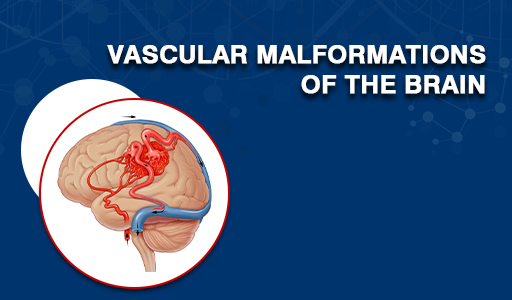


Spinal cord vascular malformations are abnormal connections between arteries and veins in the spinal column due to absence of small blood vessels or capillaries. This causes abnormal flow of blood.
Spinal vascular malformations include the malformations of the spinal cord, vertebral bodies, the tissue around the spinal cord & the spine, the bones of the spine or a combination of these. They are serious medical issues that can even result in paralysis if left untreated.
· Spinal arteriovenous malformations (AVMs)
· Dural arteriovenous fistulas (DAVF)
· Spinal hemangiomas
· Cavernous angiomas
· Cavernous malformations
· Aneurysms
Although the specific cause of these congenital abnormalities is not known, but following reasons may cause vascular malformations:
· Congenital abnormalities of blood vessels occur in younger patient population
· Subarachnoid hemorrhage
· Increased venous pressure
· Progressive damage to the spinal cord
· Trauma in older population
NA
Some of the spinal cord vascular malformations are congenital while some develop later in life. They show following symptoms either acutely or may take several years to appear:
· Either loss of sensations or abnormal sensations such as numbness or tingling
· Sudden onset of pain in back, neck or leg
· Extreme weakness in the upper or lower extremity
· Loss of bladder and bowel control
· Progressive neurological deficits
· Headache
· Neck stiffness
· Photosensitivity or intolerance of bright light
· Paralysis
· Pain radiating down the legs
The diagnosis of malformations requires complete history of the patient and a thorough physical and neurological examination. This along with following diagnostic tests helps the physician to appropriately treat the abnormality:
· MRI
· Myelography
· Spinal angiography
· Head trauma
Treatments
Medications may help manage symptoms such as seizures, headaches and back pain.
Surgery
The main treatment for AVM is surgery. Specific doctor might recommend surgery if you're at a high risk of bleeding. The surgery might completely remove the AVM. This treatment is usually used when the AVM is in an area where surgeon can remove the AVM with little risk of causing significant damage to the brain tissues.
Endovascular embolization is the type of surgery in which the surgeon threads a catheter through the arteries to the AVM. A substance is injected to nearest parts of the AVM to reduce the blood flow. This might also be done before brain surgery or radiosurgery to help reduce the risk of complications.
Sometime the stereotactic radiosurgery is used to treat AVMs. It uses intense, highly focused beams of radiation to damage the blood vessels and stop the blood supply to the AVM.
NA
